The 2023 summer update brings a new major version of the DIC measurement software ALPHA. We are Xsighted to present new features and summarize other improvements.
The DIC application enhances the visible part of all experiments to better understand their thermal and mechanical events by the visualization of the image analysis…
Need help to have your desired features implemented?
Ask and chat with the developers on [email protected] to schedule a call, telecon, or an on-site discussion.
The visualization of deformations during a dynamic shock test of a bearing pad by using a Bend Line and the crack propagation analysis of the strain field of a DIC Area.

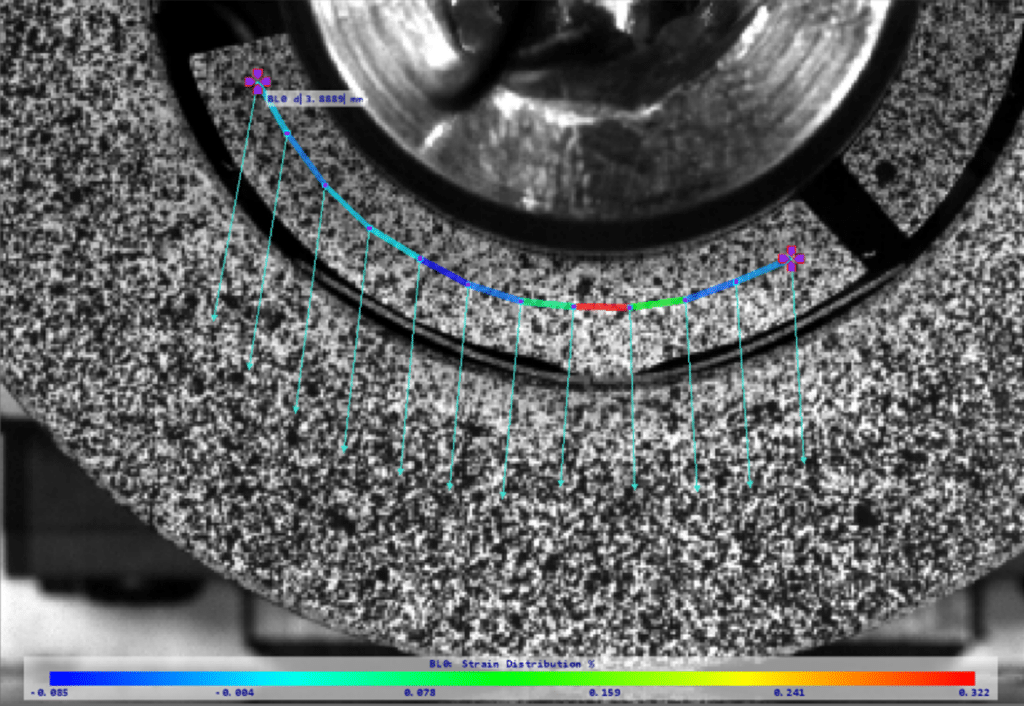
Based on our customers feedback, we added:
The real-time data export also writes the output data in ASCII during real-time. This feature simplifies the export and allows users real-time results used as an alternative output channel.
The real-time video export and consequent functionality allow users to have an evidence of the provided tests with possibilities to implement measurement methods into the ERP (Enterprise Resource Planning) systems.
The ALPHA measurement software supports the Modbus input device protocol for attaching additional sensors like thermocouples, load cells, strain gauges, distance sensors, etc., and communication with other industrial devices.
A new option for anti-aliasing maximizes the robustness of the DIC method aliasing.
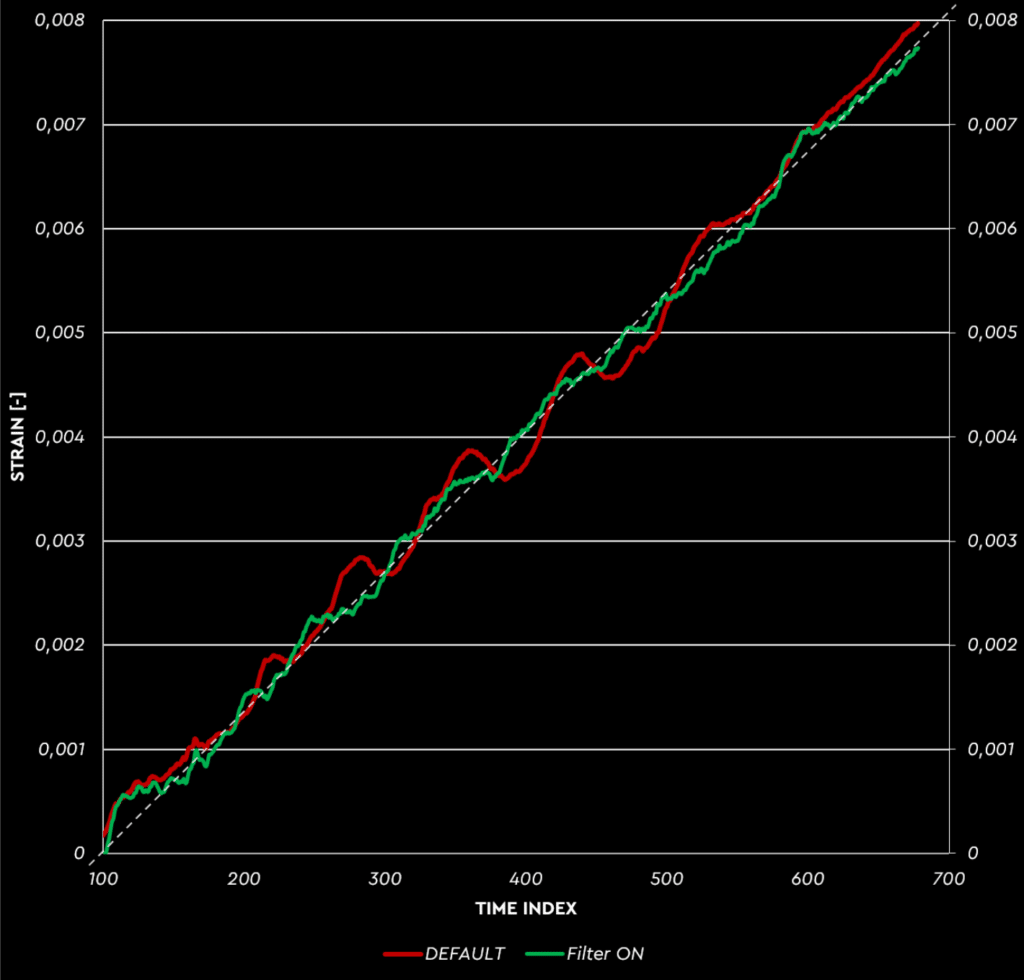
The research module was enhanced by the support for XIMEA and Daheng cameras. and a special Planar 3D mode with a configurable working distance for 3D methods. Also, these functionalities will be regularly released in future ALPHA versions when the research integration is finalized.
As a continuous improvement, the workflow is quicker and more flexible:
the stereo camera pairs can be calibrated even with different camera resolutions.
A camera model database is integrated with calibrations. This simplifies the way of using various cameras and camera sets. The database includes the intrinsic set of camera parameters, the parameters necessary to link the pixel coordinates of an image point with the corresponding coordinates in the camera reference frame.
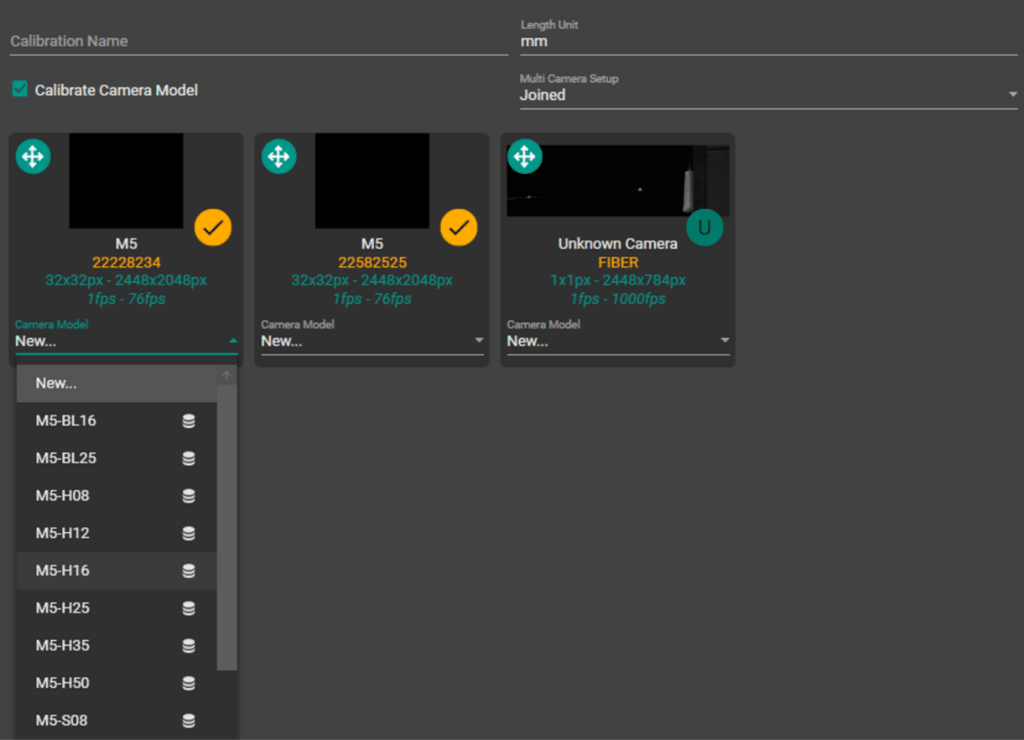
Users can quickly set the camera model from a list placed in the calibration guide for a list placed under the preview of a given camera. Then only the extrinsic parameters need to be adjusted, which define the location and orientation of the camera reference frame to a known reference image. These parameters can be provided on one click by using just a single position of a calibration grid or a defined distance when using simple (grid-less) calibrations.
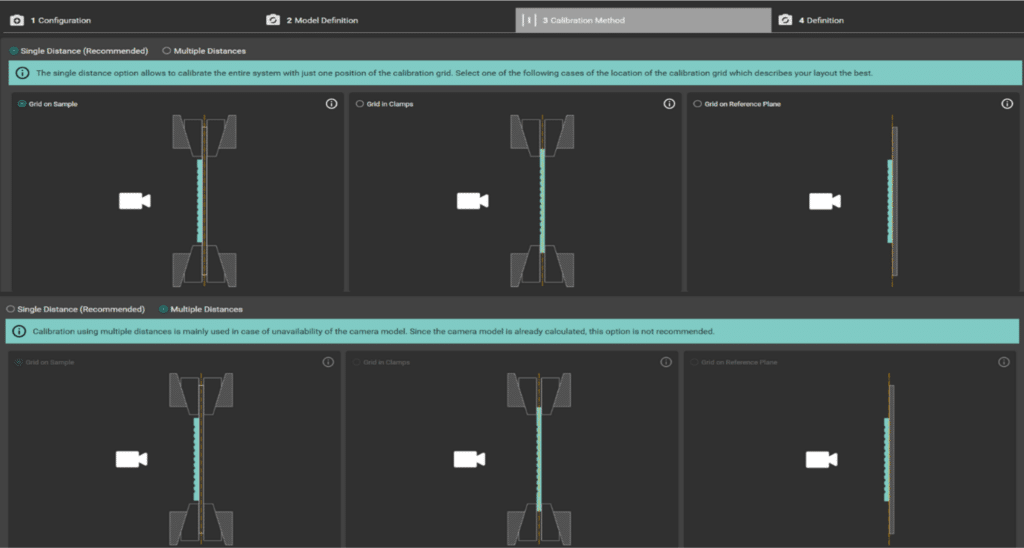
The measurements with Trans Lines and ROD calibrations get improvements
in their accuracy and precision:
A more precise computation of the neck width has been implemented to Trans Lines. Now the computation of the shortest width line on Trans Lines can be done with a higher accuracy and robustness, as highlighted below.
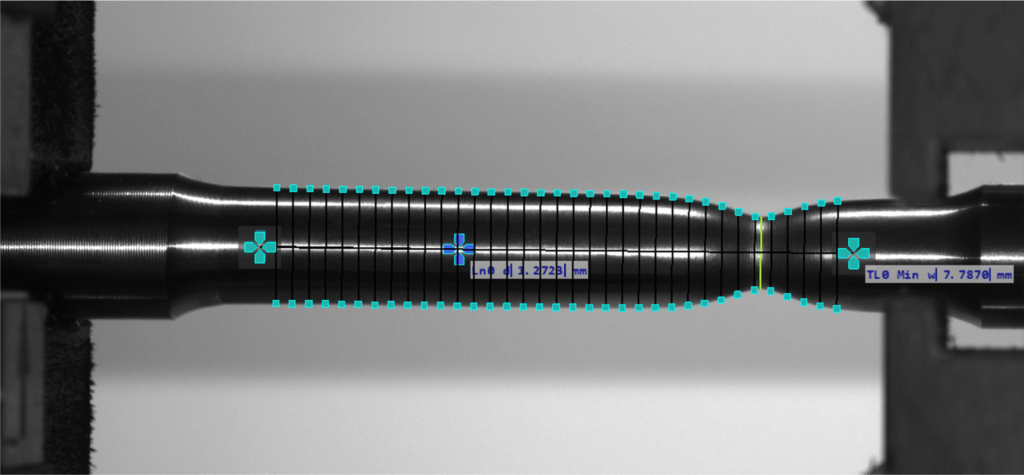
The rebar measurement tools (ROD functionality) were significantly improved for the purposes of an automatic calibration, which now reduces the inaccuracy between the calibration plane and the slope of a real clamped rebar sample. We also improved the API commands for ROD calibrations to accelerate the automated testing using robotic systems.
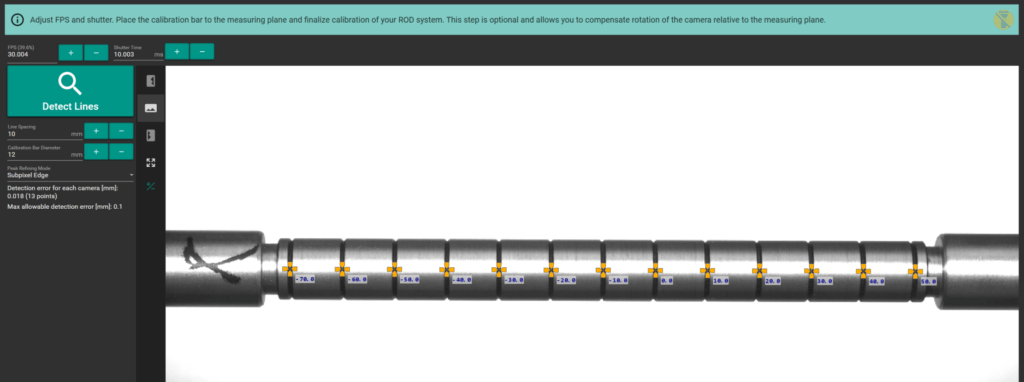
Everyday use tools and functions were enhanced to be more user-friendly:
All probes can be copied and renamed for quicker set-up of the probe distribution and their identification among the computed data.
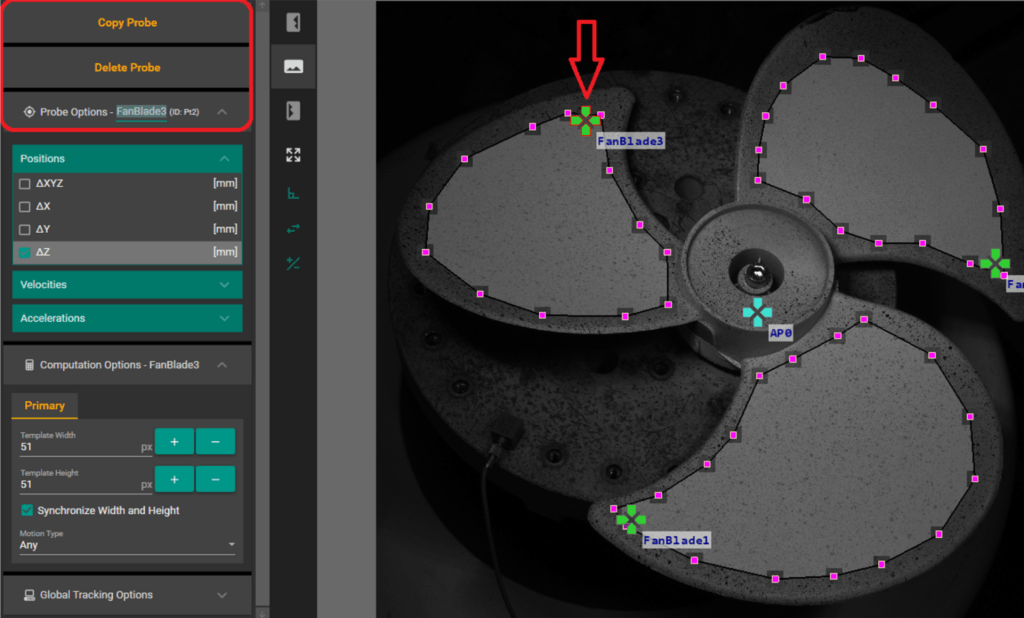
The pause button enhanced the ALPHA DIC to postpone recording and computation during measurements and continue with the measuring at a later time. It is convenient for time-demanding measurements and experiments with time stepping etc. All output values can now be tare to zero anytime during measuring.
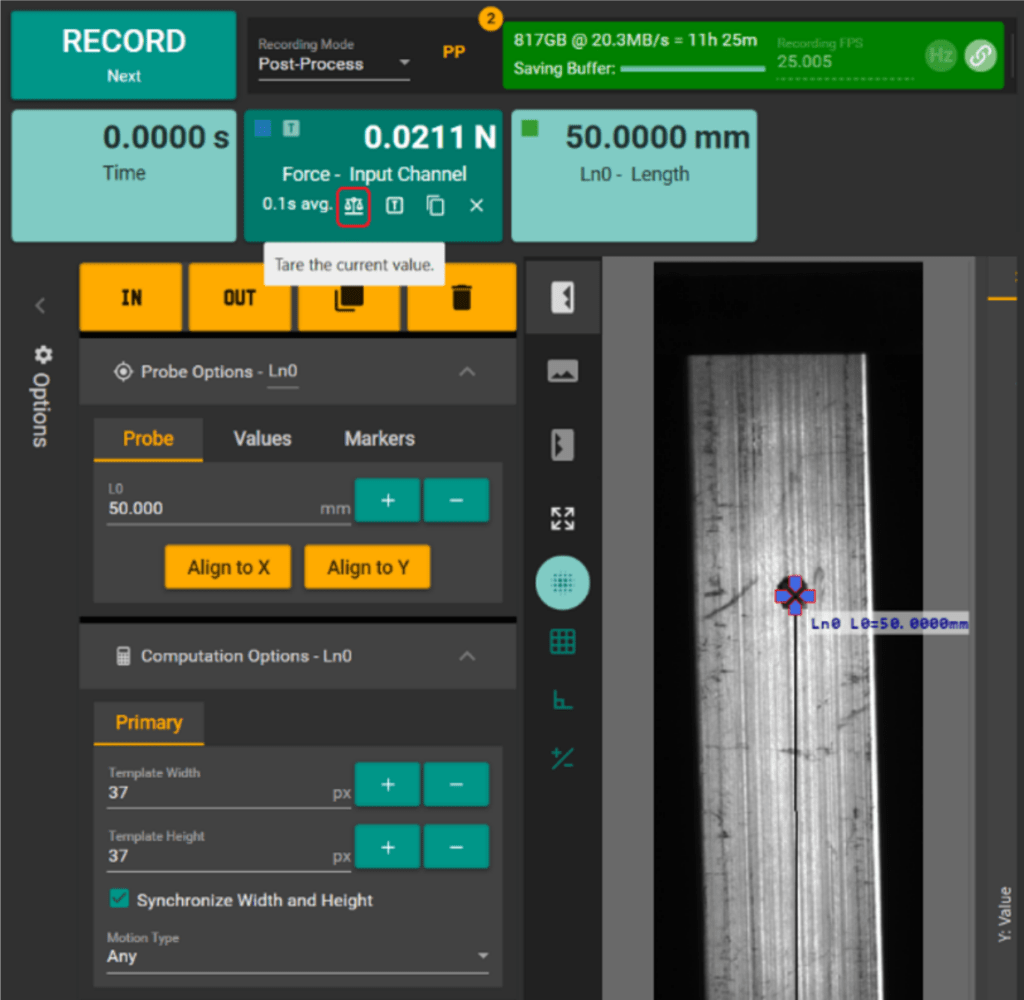
The scripting editor gets a debugging enhancement – the error indication of custom values during their evaluation directly in UI (User Interface). The custom value scripts’ import/export features are also available for a more comfortable sharing of scripts.
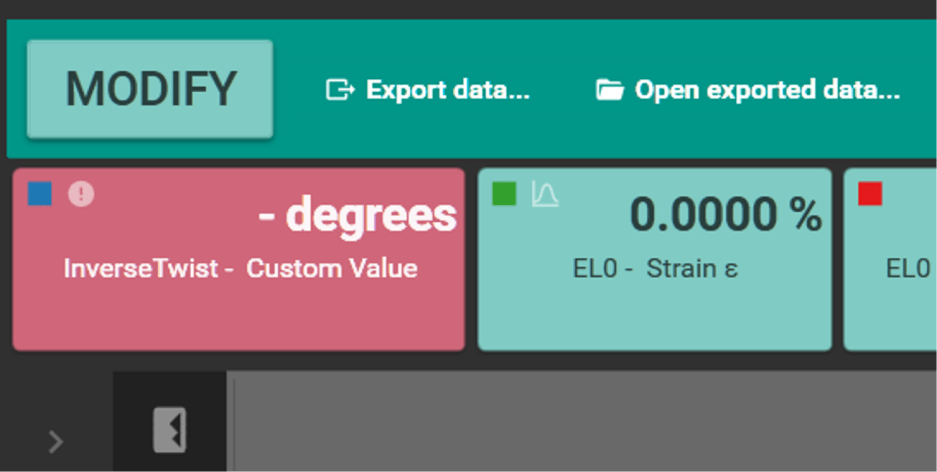
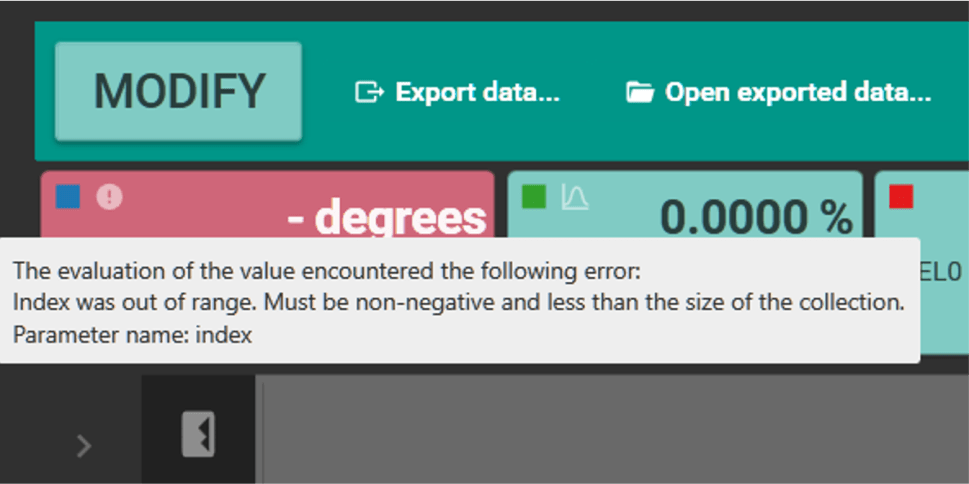
ALPHA 2023 release integrates the following 29 major improvements:
- Added RealTime data and video export
- Greatly improved ROD calibration usability
- Added Single Distance 2D calibration methods and Grid Thickness Offset
- Overall performance improvements – faster UI, computation, etc.
- Added camera model database to all types of calibrations
- Added more precise neck width computation to Trans Lines
- Added Modbus input device
- Added PulseGen output device
- Added Active Segment Index as value type of Extreme/ROD Lines
- Improved calibration and method overview ergonomics and responsiveness
- Improved support of calibrating cameras with different resolutions
- Added Japanese localization
- Added SETTOTALLENGTH command for MercuryRT API implementation
- Added API Total Length Offset parameter to all line-based probes
- Added Copy Probe and Rename Probe buttons
- Added PostProcess Only and Educational licenses
- Added option to rename records from both RealTime and PostProcess pages
- Added support of XIMEA and Daheng cameras (Research module)
- Added API commands for remote ROD calibration
- Added gradient filtering options to Tracking Settings
- Added detection range and highlighted shortest width line on Trans Lines
- Added option to disable axial line tracking of Trans Lines
- Improved look and ergonomics of buttons in Options Panel
- Improved DIC area detection logic in 3D for non-homogenous surfaces
- Added error indication of custom values during their evaluation to UI
- Added import/export of custom value scripts
- Added option to implement IDisposable interface in custom value scripts
- Added button to pause recording and computation during measurements
- Improved value taring, so that any computed value may use it and also during measurement
ALPHA 2023 release also integrates additional 68 minor improvements.